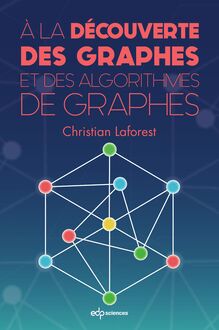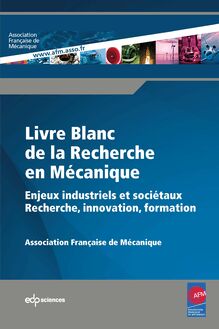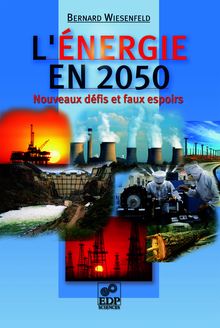Stars and Stellar Evolution , livre ebook
333
pages
English
Ebooks
2008
Obtenez un accès à la bibliothèque pour le consulter en ligne En savoir plus
Découvre YouScribe en t'inscrivant gratuitement
Découvre YouScribe en t'inscrivant gratuitement
333
pages
English
Ebooks
2008
Obtenez un accès à la bibliothèque pour le consulter en ligne En savoir plus
Publié par
Date de parution
01 octobre 2008
Nombre de lectures
1
EAN13
9782759803286
Langue
English
Poids de l'ouvrage
9 Mo
The diverse forms that stars assume in the course of their lives can all be derived from the initial conditions : the mass and the original chemical composition. In this textbook Stars and Stellar Evolution the basic concepts of stellar structure and the main roads of stellar evolution are described. First, the observable parameters are presented, which are based on the radiation emerging from a stellar atmosphere. Then the basic physics is described, such as the physics of gases, radiation transport, and nuclear processes, followed by essential aspects of modelling the structure of stars. After a chapter on star formation, the various steps in the evolution of stars are presented.
This leads us to brown dwarfs, to the way a star changes into the red-giant state and numerous other stages of evolution and ultimately to the stellar ashes such as white dwarfs, supernovae and neutron stars. Stellar winds, stellar rotation and convection all influence the way a star evolves. The evolution of binary stars is included by using several canonical examples in which interactive processes lead to X-ray binaries and supernovae of type Ia. Finally, the consequences of the study of stellar evolution are tied to observed mass and luminosity functions and to the overall evolution of matter in the universe.
The authors aim at reaching an understanding of stars and their evolution by both graduate students and astronomers who are not themselves investigating stars. To that end, numerous graphs and sketches, among which the Hertzsprung-Russell diagram is the dominant one, help trace the ways of stellar evolution. Ample references to specialised review articles as well as to relevant research papers are included.
Publié par
Date de parution
01 octobre 2008
Nombre de lectures
1
EAN13
9782759803286
Langue
English
Poids de l'ouvrage
9 Mo
J
i
j
N
k
F<I
%;<9
m
B%J
<
%J< >><N@J
fclk`fe
Xe[J \ccXi
JkXStars and Stellar EvolutionStars and Stellar Evolution
K.S. de Boer and W. Seggewiss
17 avenue du Hoggar
Parc d’ activit´es de Courtabeuf, B.P. 112
91944 Les Ulis Cedex A, FranceCover image: The stellar association LH 95 in the Large Magellanic Cloud
showing star formation, young stars and old stars.
HST-ACS image, courtesy of D. Gouliermis and NASA/ESA
ISBN 978-2-7598-0356-9
This work is subject to copyright. All rights are reserved, whether the whole or
part of the material is concerned, specifically the rights of translation, reprinting,
re-use of illustrations, recitation, broad-casting, reproduction on microfilms or in
other ways, and storage in data banks. Duplication of this publication or parts
thereof is only permitted under the provisions of the French and German Copyright
laws of March 11, 1957 and September 9, 1965, respectively. Violations fall under
the prosecution act of the French and German Copyright Laws.
c EDP Sciences, 2008
Contents
1 Introduction 1
1.1 Historicalbackground . ... .. .. ... .. .. ... .. .. ... .. .. ... .. 1
1.1.1 Historyofthecharacterizationofstars.. ... .. .. ... .. .. ... .. 1
1.1.2 History of the ideas about the evolution of stars . . . . . . . . . . . . . . . 2
1.2 Stellarevolution-theimportanceofgravity . .. ... .. .. ... .. .. ... .. 3
1.3 Relevanceofstarsforastrophysics . ... .. .. ... .. .. ... .. .. ... .. 4
1.4 Elementaryastronomyandclassicalphysics . . . ... .. .. ... .. .. ... .. 5
1.4.1 Classicalobservations . . . . ... .. .. ... .. .. ... .. .. ... .. 5
1.4.2 ThePlanckfunction . . . . . ... .. .. ... .. .. ... .. .. ... .. 7
1.4.3 Spectral lines, metallicity, and gas conditions . . . . . . . . . . . . . . . . . 8
1.5 Thesurfaceparametersofstars . . . ... .. .. ... .. .. ... .. .. ... .. 9
1.5.1 TheHertzsprung-RussellDiagram,HRD. ... .. .. ... .. .. ... .. 9
1.5.1.1 Observational HRDs: M with SpT or B− V .. .. .. ... .. 9V
1.5.1.2 Physical HRD: luminosity L and effective temperature T .. .. 10eff
1.5.2 Spectralenergydistributions ... .. .. ... .. .. ... .. .. ... .. 12
1.5.3 Relation between M , M ,and L.. .. ... .. .. ... .. .. ... .. 12V bol
1.5.4 Caution with mass - luminosity - temperature relations . . . . . . . . . . . 12
1.6 Surfaceparametersandsizeofastar ... .. .. ... .. .. ... .. .. ... .. 13
1.7 NamesofstartypesfromlocationintheHRD . ... .. .. ... .. .. ... .. 14
1.8 Summary . ... .. .. ... .. .. ... .. .. ... .. .. ... .. .. ... .. 14
2 Stellar atmosphere:
Continuum radiation + structure 15
2.1 Introduction... .. .. ... .. .. ... .. .. ... .. .. ... .. .. ... .. 15
2.2 Radiationtheory .. .. ... .. .. ... .. .. ... .. .. ... .. .. ... .. 16
2.2.1 Definitions . .. ... .. .. ... .. .. ... .. .. ... .. .. ... .. 16
2.2.1.1 Radiativeintensity. ... .. .. ... .. .. ... .. .. ... .. 16
2.2.1.2 Meanintensity,radiativeflux .. ... .. .. ... .. .. ... .. 17
2.2.1.3 Radiation density and radiation pressure . . . . . . . . . . . . . . 17
2.2.2 Theequationofradiationtransport . . . ... .. .. ... .. .. ... .. 17
2.2.3 Exploringtheequationofradiationtransport . .. .. ... .. .. ... .. 18
02.2.3.1 a: No background intensity: I =0 . . . . . ... .. .. ... .. 19ν
02.2.3.2 b: background intensity: I =0 ... .. .. ... .. .. ... .. 19ν
2.2.3.3 Graphicrepresentationofthecases . .. .. ... .. .. ... .. 19
2.3 Thermodynamic equilibrium . . . . . . . . . . . . . . . . . . . . . . . . . . . . . . . 19
2.4 Theradiativetransferinstellaratmospheres. .. ... .. .. ... .. .. ... .. 20
2.4.1 Effectsofgeometry. . . . . . ... .. .. ... .. .. ... .. .. ... .. 20
2.4.2 Includingallfrequencies . . . ... .. .. ... .. .. ... .. .. ... .. 20
2.5 Continuityequation . . ... .. .. ... .. .. ... .. .. ... .. .. ... .. 20
2.6 Specialcasesandapproximations .. ... .. .. ... .. .. ... .. .. ... .. 21
2.6.1 AtmospheresinLTE . . . . . ... .. .. ... .. .. ... .. .. ... .. 21
2.6.2 Planeparallelatmosphere .. ... .. .. ... .. .. ... .. .. ... .. 21
iiiiv CONTENTS
2.6.3 Limbdarkening.. .. .. ... .. .. ... .. .. ... .. .. ... .. .. 21
2.6.4 Grayatmosphere;Rosselandmean .. ... .. .. ... .. .. ... .. .. 23
2.7 Structureofstellaratmospheres. ... .. .. ... .. .. ... .. .. ... .. .. 24
2.7.1 Temperaturestructure . . ... .. .. ... .. .. ... .. .. ... .. .. 24
2.7.2 Pressurestructure . . . . ... .. .. ... .. .. ... .. .. ... .. .. 24
2.8 Opacityandtheabsorptioncoefficients.. .. ... .. .. ... .. .. ... .. .. 25
2.8.1 Absorptionduetoionization . . . . . ... .. .. ... .. .. ... .. .. 25
2.8.1.1 Total absorption cross section for hydrogen . . . . . . . . . . . . . 25
2.8.1.2 Absorption due to ionization of helium . . . . . . . . . . . . . . . 26
2.8.1.3 Absorption due to ionization of metals . . . . . . . . . . . . . . . 26
−2.8.2 The H ion . ... .. .. ... .. .. ... .. .. ... .. .. ... .. .. 26
2.8.3 Absorptionduetodissociation . . . . ... .. .. ... .. .. ... .. .. 27
2.8.4 Free-freetransitions . .. ... .. .. ... .. .. ... .. .. ... .. .. 27
2.8.5 Scattering .. ... .. .. ... .. .. ... .. .. ... .. .. ... .. .. 27
2.8.6 Totalabsorptioncoefficient . . . . . . ... .. .. ... .. .. ... .. .. 28
2.8.7 Effectsofgasdensityonopacity . . . ... .. .. ... .. .. ... .. .. 29
2.9 Emissionandtheemissioncoefficient. .. .. ... .. .. ... .. .. ... .. .. 29
2.10 ThespectralcontinuumandthePlanckfunction . . . . . ... .. .. ... .. .. 29
2.10.1 EffectsfortheCMD . . . ... .. .. ... .. .. ... .. .. ... .. .. 30
2.10.2 Backwarming,blanketing ... .. .. ... .. .. ... .. .. ... .. .. 31
2.10.3 Electrondensityandopacityeffects . ... .. .. ... .. .. ... .. .. 31
3 Stellar atmosphere:
Spectral structure 33
3.1 Spectrallines .. .. ... .. .. ... .. .. ... .. .. ... .. .. ... .. .. 33
3.1.1 Lineprofile . ... .. .. ... .. .. ... .. .. ... .. .. ... .. .. 33
3.1.1.1 Lorentzprofile . ... .. .. ... .. .. ... .. .. ... .. .. 33
3.1.1.2 Pressurebroadening . .. .. ... .. .. ... .. .. ... .. .. 34
3.1.1.3 Dopplerbroadening . .. .. ... .. .. ... .. .. ... .. .. 35
3.1.1.4 TheVoigtprofile... .. .. ... .. .. ... .. .. ... .. .. 35
3.1.2 Shape and strength of spectral lines and curve of growth . . . . . . . . . . . 36
3.1.2.1 Small optical depth in the line (τ 1 and/or α1) ... .. .. 36
3.1.2.2 Very large optical depth in the line (τ 1 and/or α1).. .. . 37
3.1.2.3 Intermediate α and/or τ .. ... .. .. ... .. .. ... .. .. 38
3.1.2.4 Shapeofcurveofgrowth . . ... .. .. ... .. .. ... .. .. 38
3.2 Statistics . . . . . . ... .. .. ... .. .. ... .. .. ... .. .. ... .. .. 38
3.2.1 Boltzmann statistics and excitation equation . . . . . . . . . . . . . . . . . 38
3.2.2 IonizationandSahaequation . . . . . ... .. .. ... .. .. ... .. .. 39
3.3 Statisticsandstructureinstellarspectra. . . ... .. .. ... .. .. ... .. .. 40
3.3.1 Excitation. . ... .. .. ... .. .. ... .. .. ... .. .. ... .. .. 40
3.3.2 Ionization . . ... .. .. ... .. .. ... .. .. ... .. .. ... .. .. 40
3.3.3 Spectrophotometricmethods . .. .. ... .. .. ... .. .. ... .. .. 40
3.3.4 BalmerjumpandBalmerSeries . . . ... .. .. ... .. .. ... .. .. 41
3.3.5 T and log g from Stro¨mgrenphotometry . .. .. ... .. .. ... .. .. 42eff
3.3.6 Metallicity from Stro¨mgrenphotometry . . . . . . ... .. .. ... .. .. 43
3.3.7 Spectroscopyandthecurveofgrowth ... .. .. ... .. .. ... .. .. 43
3.3.7.1 Excitation . .. ... .. .. ... .. .. ... .. .. ... .. .. 43
3.3.7.2 Ionization. . . . ... .. .. ... .. .. ... .. .. ... .. .. 44
3.3.7.3 Depthstructureofatmosphere .. .. .. ... .. .. ... .. .. 44
3.3.7.4 Abundance of elements . . . . . . . . . . . . . . . . . . . . . . . . 45
3.4 Specialfeatures . . . ... .. .. ... .. .. ... .. .. ... .. .. ... .. .. 45
3.4.1 TheG-Band ... .. .. ... .. .. ... .. .. ... .. .. ... .. .. 45
+3.4.2 Quasi-molecular absorption: H and H .. .. .. ... .. .. ... .. .. 452 2
3.4.3 Molecularabsorptionincoolatmospheres . .. .. ... .. .. ... .. .. 46CONTENTS v
3.5 MagneticfieldsandZeemaneffect . ... .. .. ... .. .. ... .. .. ... .. 47
3.6 Gravitationalsettlingandradiationlevitation . . ... .. .. ... .. .. ... .. 48
3.7 Stellarrotation . .. .. ... .. .. ... .. .. ... .. .. ... .. .. ... .. 49
3.7.1 Rotationbroadeningofspectrallines. . . ... .. .. ... .. .. ... .. 49
3.7.2 Rotation and average surface parameters T, M , B− V .. .. .. ... .. 49V
3.8 Stellar classification:
theMKKsystemandnewermethods... .. .. ... .. .. ... .. .. ... .. 50
3.8.1 Development of stellar classification towards the MKK system . . . . . . . 50
3.8.2 QualityoftheMKclassificationprocess . ... .. .. ... .. .. ... .. 51
3.8.3 Newclassificationmethods . ... .. .. ... .. .. ... .. .. ... .. 51
4 Stellar structure: Basic equations 53
4.1 Fourbasicequationsfortheinternalstructure.. ... .. .. ... .. .. ... .. 53
4.1.1 Masscontinuity. ... .. .. ... .. .. ... .. .. ... .. .. ... .. 53
4.1.2 Hydrostatic equilibrium . . . . . . . . . . . . . . . . . . . . . . . . . . . . . 53
4.1.3 Energyconservation . .. .. ... .. .. ... .. .. ... .. .. ... .. 54
4.1.4 Temperaturegradient .. .. ... .. .. ... .. .. ... .. .. ... .. 55
4.1.4.1 Radiativeenergytransport . .. ... .. .. ... .. .. ... .. 55
4.1.4.2 Convectiveenergytransport .. ... .. .. ... .. .. ... .. 56
4.1.4.3 Conductive energy transport . . . . . . . . . . . . . . . . . . . . . 56
4.2 Stability and time scales . . . . . . . . . . . . . . . . . . . . . . . . . . . . . . . . . 57
4.2.1 Virialtheorem . ... .. .. ... .. .. ... .. .. ... .. .. ... .. 57
4.2.2 Kelvin-Helmholtztimescale. ... .. .. ... .. .. ... .. .. ... .. 57
4.2.3 Nucleartimescale . . . . . . ... .. .. ... .. .. ... .. .. ... .. 58
4.2.4 Dynamicaltimescale . . . . ... .. .. ... .. .. ... .. .. ... .. 58
4.3 Convectionversusradiation . . . . . ... .. .. ... .. .. ... .. .. ... .. 59
4.3.1 Schwarzschild’scriterionforconvection . ... .. .. ... .. .. ... .. 59
4.3.2 Ledoux’scriterionforconvection . .. .. ... .. .. ... .. .. ... .. 61
4.3.3 Estimates for∇ <∇ .. ... .. .. ... .. .. ... .. .. ... .. 61ad rad
4.3.3.1 Adiabatic gradient∇ . . . . . ... .. .. ... .. .. ... .. 61ad
4.3.3.2 Radiative gradient∇ . . . . . .














